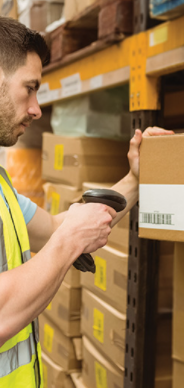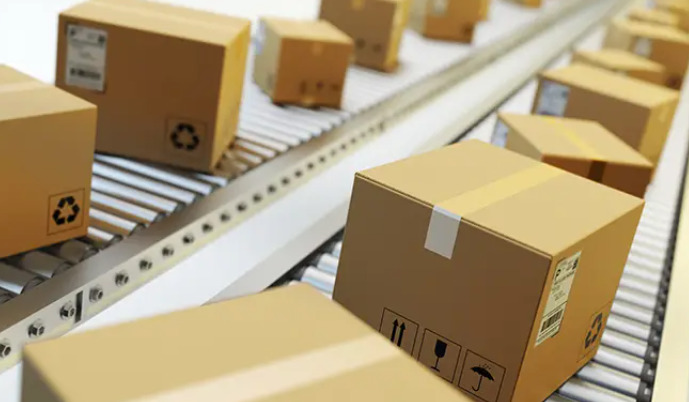Barcodes and RFID are the two most mainstream forms of labels in logistics and warehousing today. The two label forms are very different. Everyone is familiar with barcode labels, but RFID is relatively unfamiliar. So what is the difference between these two labels? What form of labeling is more appropriate for us to use? Today I will analyze it for you.
First let’s look at barcode labels. Barcode labels can be divided into two forms: barcode and QR code. Both barcodes and QR codes have some very obvious advantages.

штрих-код или RFID 3
Advantages of barcodes
Первый, barcode labels are cheap.
Второй, barcode machines are cheap and easily available.
Третий, most machines are equipped with barcode function, and barcode compatibility is strong.
Then let’s take a look
Disadvantages of barcodes
Первый, barcodes are not easy to scan
When scanning the barcode, the barcode must be pasted very close, and the angle of the light and the scanning gun is required to be high.
Второй, the scanning efficiency is low
You can only scan the codes one by one, because batch reading cannot be supported.
Третий, it is easy to fail
Barcodes can easily fail once they are contaminated or scratched.
Let’s look again

штрих-код или RFID
Преимущества RFID
Первый, RFID метки have a long reading distance.
Support long-distance reading, many ultra-high frequency passive tags can be easily read at a distance of seven or eight meters, and active tags can be read at a distance of tens of meters.
Второй, support batch reading
Dozens or even hundreds of tags can be read at a time.
Третий, strong automation integration capabilities
RFID can more easily achieve full automation and reduce labor costs.
Четвёртый, the label has strong anti-pollution ability
Because the signal is not collected through optical principles, it doesn’t matter how dirty the label is, it does not affect his reading.
Then let’s take a look at the shortcomings of RFID, which can be summed up in one word, То есть, “expensive”. Although the cost of labels can be reduced to four or five cents, compared with barcode labels of one or two cents or even a few cents, Still a lot more expensive.
The label is expensive, the card machine is expensive, the compatibility is not as good as the QR code label, and the product is not so easy to find. In the final analysis, the cost is high and the usage is relatively small, so people have little awareness of it and the compatibility is not so high.
Now we know the pros and cons of barcodes and RFID. Затем, we can begin to make judgments and choices.
When choosing barcode or RFID
Прежде всего, we have to consider the cost of your time
It is whether your employees need to spend a lot of time to identify a certain asset, and whether your employees are expensive. If your labor cost is not low and you need to identify a large number of labels in a short time, then RFID is undoubtedly a better choice, because its identification efficiency is dozens of times that of barcodes.
And if you only recognize the label occasionally, or the cost of labor is lower than the cost of the label, then you can choose the barcode label.
Point 2, it depends on your needs for product traceability
The choice of label also depends on how high your need for product traceability is. If you go to the supermarket to buy some simple daily necessities. You don’t need to know too much product traceability, as long as you know the origin, production date and shelf life. But what if you buy thousands of dollars a pound of wagyu beef? So do you expect all circulation links to be traceable and ensure that the product is genuine?
So what about some military equipment? firearms. Parachutes, и т.д., must all the circulation links be traceable to ensure that all those who handle these links are careful.
И RFID метки can be very accurate and have high encryption to ensure that such work can be done.
The third point is to take into account the environment in which the asset is located
If the label is used in industrialized occasions, the barcode is more likely to be damaged or contaminated, and RFID has become the best choice. And if your asset is in a clean, dry environment, or as a consumable, then a simple barcode will suffice.
Четвёртый, it depends on whether you need to change the information in the label
RFID can change the information in the label in real time, which is not possible with barcodes. Although the barcode can also be defined for the label through the system and the background, but this requires the system and the network, which has many limitations. Поэтому, RFID метки and systems are mostly used in the management of inbound and outbound warehouses and inventory inventory today.
With the increasing performance of RFID метки, the more affordable prices, the increasingly high requirements for product traceability, and the increasing labor costs, RFID has begun to replace barcode labels more and more. As people gradually enter the era of the Internet of Everything, RFID technology has played a dominant role in tag traceability in the high-net-worth field.
Ключевое слово: RFIDHY Складирование Тег NFC Решения RFID
СМС: Ли Шицзюнь RFIDHY
Пожалуйста, укажите источник




